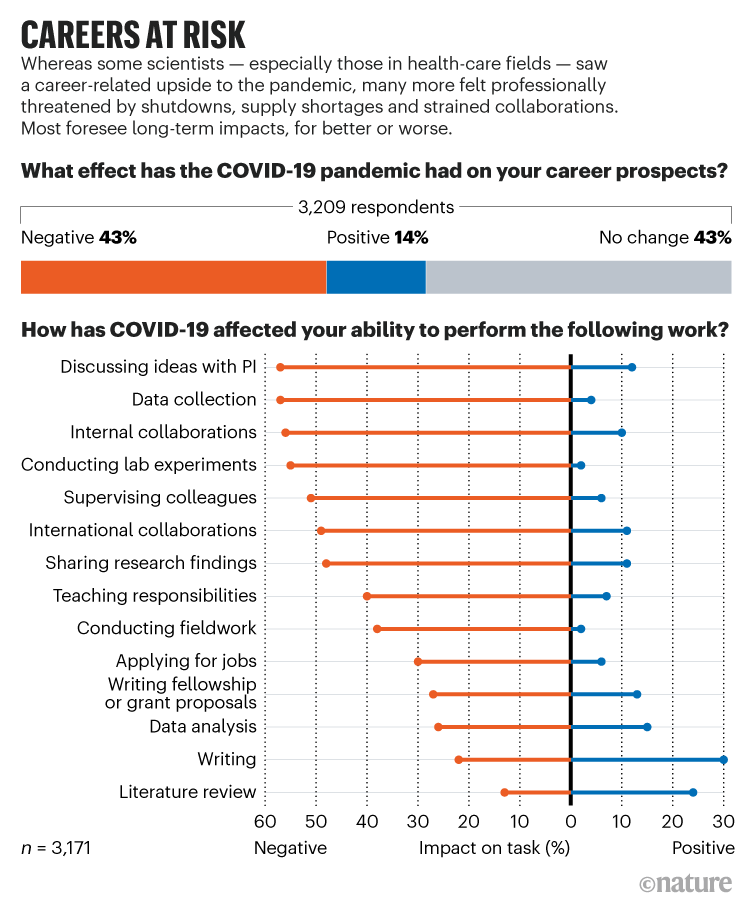COVID’s toll on science careers
More than 40% of scientists say the pandemic has had a negative impact on their career prospects, according to a survey of more than 3,200 researchers worldwide. Overall, 12% of those who completed the survey said they had lost a job offer because of COVID-19. More than half said it had impaired their ability to collect data (57%), conduct laboratory experiments (55%) or collaborate with internal colleagues (56%).
Fusion by design
Nuclear fusion is widely considered to be an essential technology for meeting future demand for clean energy — but it has also seemed a distant one. Fusion produces energy by merging very light nuclei, typically hydrogen, and this can happen only at very high temperatures and pressures. Now fusion seems to be finally approaching commercial viability, with more than 30 private fusion firms around the world. Key to these efforts are advances in materials research and computing that are enabling technologies beyond the standard designs. This graphic — available in more detail in our Feature on nuclear fusion — shows five prominent designs.
Embryo’s secrets revealed
The events that occur after a human embryo implants in the uterus is a developmental ‘black box’; knowledge is based largely on model organisms or in vitro model systems. A paper in Nature offers fresh insight, by profiling gene expression in individual cells in a post-implantation human embryo (16–19 days after fertilization), which was obtained following informed consent by a donor undergoing termination of her pregnancy.
The embryo was in the middle of gastrulation, a crucial developmental process in which a layer of cells known as the epiblast gives rise to the embryo’s three ‘germ’ layers (the endoderm, mesoderm and ectoderm) and the body plan is first established. Understanding this process is fundamental to uncovering the causes of congenital diseases, early miscarriage and infertility.
The authors identified cell populations from structures including the three germ layers, the amniotic ectoderm (which forms the amniotic cavity), the primitive streak (which forms the basis of the body’s bilateral symmetry) and primitive haematopoietic cells that give rise to a rudimentary blood system. The findings indicate how and when human tissues and cell populations are defined.
"impact" - Google News
November 19, 2021 at 04:58PM
https://ift.tt/3nu7tJJ
COVID's career impact and embryo secrets — the week in infographics - Nature.com
"impact" - Google News
https://ift.tt/2RIFll8
https://ift.tt/3fk35XJ
Bagikan Berita Ini


















0 Response to "COVID's career impact and embryo secrets — the week in infographics - Nature.com"
Post a Comment